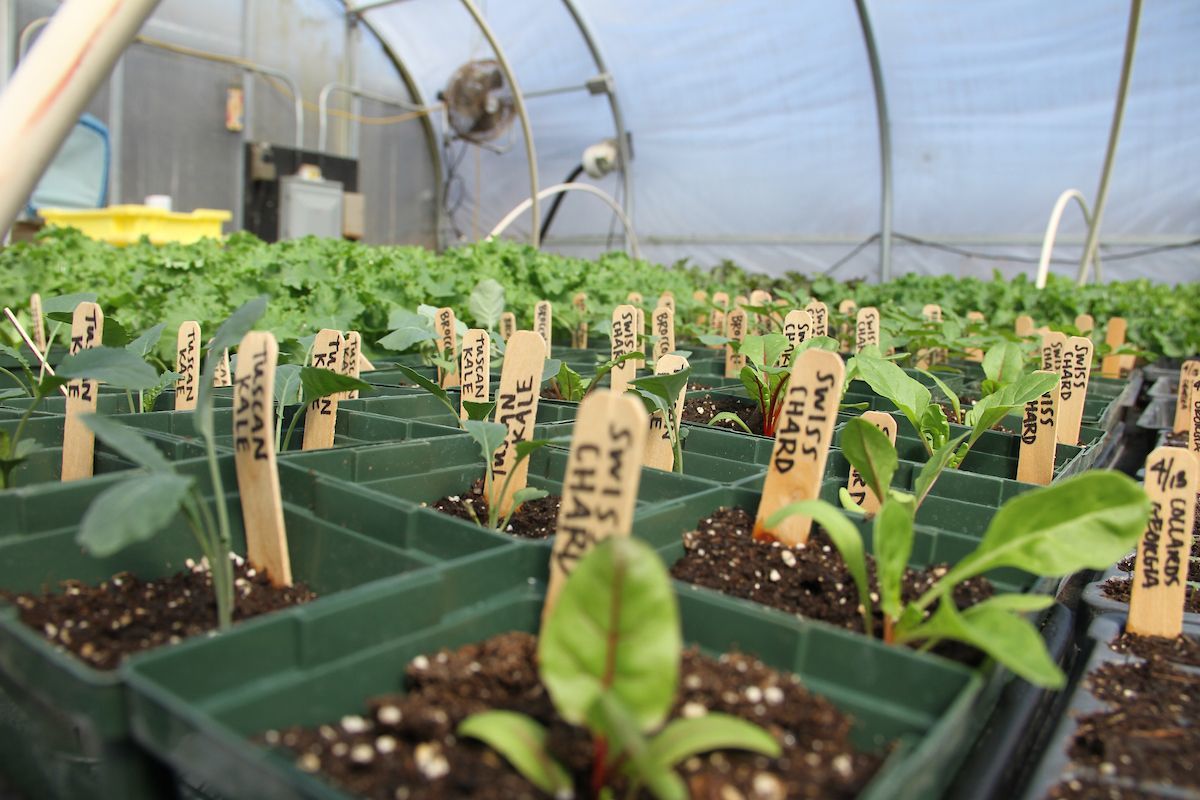
Barnyard, overripe melon, green apple, plastic, mint. These descriptors may not have much in common, but they were all uniquely identified as flavors or aromas during a cider sensory analysis that Glynwood organized at Angry Orchard last August.
This sensory gathering was a long-anticipated opportunity to taste the first products of the Cider Project’s fermentation trials. Featuring fruit from trees donated and planted by the Cider Project in 2017, the trials are an ongoing effort to identify unique cider flavors, structures, and even terroir by fermenting juice from distinct orchards and apple varieties (separately, but under uniform conditions), then comparing and contrasting the ciders in a controlled tasting environment. In 2020, we collected three varieties of apple--Wickson Crab, Dabinett, and Gold Rush--from seven different orchards in Western New York, the Finger Lakes Region, and the Hudson Valley. Angry Orchard cider makers Ryan Burk and Joe Gaynor pressed all the fruit in single-varietal, single estate batches, added a neutral white wine yeast to spur fermentation, then tracked quantitative indicators such as Brix (sugar content), tannins, pH, and rate of fermentation until the cider was ready to bottle. In August 2021, Cider Project participants finally convened in Walden, NY to take part in a formal tasting facilitated by sensory experts from Boston Beer Company, Angry Orchard’s parent company.
There are many different methods, techniques and set-ups for sensory analysis, but certain objectives remain relatively consistent: tasters should have as neutral a palate as possible; the tasting should account for and minimize potential bias; and there should be a shared lexicon, such that tasters can more easily compare and contrast their observations. Prior to the tasting at Angry Orchard, Glynwood asked all participants to keep their coffee at home and to avoid wearing any fragrance--strong aromas in the tasting room can tamper sensory results. Tasters were given their cider samples in black cups, such that they could not compare color or clarity of the samples and make preliminary opinions based on appearance. Water and unsalted table crackers were offered as palate cleansers. Finally, the group went through an example together, both to warm up everyone’s senses and to begin identifying common descriptors: white wine, stone fruit, barnyard, low sweetness, and high acid were just a few of the 20+ terms that arose.
The sensory analysis was set up as a “napping” exercise, a format that works well for large groups and is approachable for less experienced tasters. In a napping analysis, everyone is given a blank page (historically a napkin, hence the name), onto which they can place and group their samples in whatever configuration makes the most sense to them. Tasters are also encouraged to assign descriptors from the shared lexicon to a given sample. Once everyone has completed their individual naps, facilitators compile results for a more complete analysis.
In the case of the Cider Project’s napping exercise, the goal was to identify sensory similarities and differences between apple varieties, and to see how much the terroir (soil type, climate, and general environment) of a given orchard impacted the overall flavors of its fruit. One season’s worth of data is insufficient for making sweeping conclusions. However, the results of our first sensory analysis did highlight interesting trends. When comparing everyone’s naps, the sensory team at Boston Beer found that the thirteen cider samples were grouped into five clusters, the primary distinguishing factors being apple variety, orchard, sweetness, fruit flavor, and freshness. In several clusters, the variety of apple prevailed as the common factor between samples. But in at least one case, a cluster included several samples from the same orchard, seeming to suggest that terroir could play a part in our experience of New York cider.
These results generated a slew of questions: Do some apple varieties exhibit more identifiable terroir than others? How big a part do apple ripeness, fruit quality, and storage methods play in overall cider flavor, and how much do these factors potentially obscure other flavor determinants? What would terroir even mean for the future of regulation, labeling and storytelling within the New York cider industry?
There is much left to answer, but luckily, there is no rush. Like with any statistical data set, these sensory analysis results will become much more meaningful with replication--multiple years’ worth of fermentation trials and sensory results will enable us to distinguish between statistical noise and significant trends. We are excited to continue on this journey: to swirl, sniff, and sip for the sake of science; to celebrate the incredible skill, commitment, and collaboration in this industry; and to move one step closer to understanding--and perhaps even defining--the sheer uniqueness of New York cider.

